3.2.1 Strategic Planning is Important
Each ERC develops a top-level strategic plan for all of its operations using the ERC Program’s 3-level strategic planning chart that depicts how engineered systems goals guide and motivate the center’s fundamental research, enabling and systems technology research, and testbeds. The core of the plan contains the major elements involving research—a research strategy that reflects and supports the ERC vision plus a comprehensive plan that:
- Covers the three levels of ERC research (i.e., fundamental knowledge, enabling technologies, and engineered systems)
- Identifies clear barriers in the way of achieving the systems goals
- Identifies clear research goals derived from those barriers, by thrust and overall, as well as milestones for their achievement
- Contains adequate human and dollar resources
- Articulates metrics for measuring progress toward final completion of individual projects.
Amplifying these general guidelines, five strategic-planning best practices for research thrust leaders are described below.
3.2.2 Clearly Define Roles and Responsibilities
The strategic plan must define fully the roles and responsibilities of the thrust leader, each member of the team, and their relationship to the rest of the leadership team—from the top to the bottom. Full definition encompasses three elements:
1) the reporting structure within the ERC;
2) how decisions are made on funding or discontinuing a project; and
3) an appropriate balance of industry interests against long-term research goals.
Aspects of the following best practices contain elaborations of these three elements.
However, definition of roles and responsibilities has to include the added mandate that research thrust leaders must be delegated authority commensurate with their responsibilities. In other words, the thrust leaders cannot be held responsible for leading if they do not have sufficient authority to do so. This problem is generally avoided if thrust leaders are able to participate in early strategic research planning, are included in the ERC’s leadership team, and can negotiate their role as members of that team to fulfill the thrust’s/ERC’s goals.
Management references often contain discussion of authority accompanying responsibility. For example, “Typically, an employee is assigned authority commensurate with the task. … When an employee has responsibility for the task outcome but little authority, accomplishing the job is possible but difficult. The subordinate without authority must rely on persuasion and luck to meet performance expectations.†(Endnote 4.)
3.2.3 Capture the Components of a Good Plan
A good strategic plan has many components. Inclusion of the following components is very important:
- An ERC has to establish a team culture versus the more traditional, individual-research culture, both intra- and inter-university;
- Ensure that the overall ERC vision and mission are articulated in the plan and shared by those in the research thrust leader’s area of responsibility;
- Define resource and budget needs, given the goals;
- Lay the groundwork to take advantage of the best communication technology (e.g., to facilitate “brainstorming sessions†and other necessary interactions).
- Define succinct deliverables and outcomes on reasonable timelines.
3.2.4 Define a Structure for Adjusting the Plan
Research thrust leaders should never assume that, once a plan is completed, it will not need to be changed. In fact, change is more likely the norm. Therefore, at the outset a structure must be defined in which adjustments or corrections relating to the research plan can be made. Among other things, this type of structure would ensure that financial resources can be distributed or redistributed, both within and among universities.
To help measure progress and determine adjustments, metrics should be defined for successful research within an ERC. Proper metrics should not be just numbers of papers published or students graduated. Rather, they should:
- Measure each project’s contribution to the thrust, such as advancing the testbed
- Exhibit an incentive to improve the thrust
- Consider additional funding from other non-ERC Program sources, attracted by the ERC’s research
- Take account of industry funding obtained for the thrust.
3.2.5 Ensure the Research Tasks Can be Accomplished with the Resources Allocated
Despite the fact that budget reallocations will probably be needed at times, the initial plan should contain budget estimates that adequately cover the research tasks as well as the necessary administrative and management support. Don’t volunteer to do too much for too little. Since budgets are likely allocated in the beginning from top levels of the ERC downward, be sure the plan contains commitments to do only what the budgeted resources will allow, and no more.
3.2.6 Create a Transparent Organizational Structure
A transparent organizational structure, preferably one that is “flat,†should be created and set forth in the plan. This type of structure would succinctly identify the various interactions and dependencies that exist, both within individual thrusts and between thrusts.
3.2.7 Examples
The following excerpts are from the strategic research plans of three ERCs [1-Synthetic Biology Engineering Research Center (SynBERC, with overall objective: enabling technologies); 2-Mid-InfraRed Technologies for Health and the Environment (MIRTHE, with overall objective: enabling technologies); and 3-Collaborative Adaptive Sensing of the Atmosphere (CASA, with overall objective: specific system product). The excerpts furnish examples of the general strategic planning guidelines and best practices described in this Section 3.2.
Note that the objective statement for each ERC signifies the type of overall goal for the center. There is a difference in strategy when the goal is a very specific system versus breakthroughs in process or understanding that would make possible a variety of different system developments.
Referral to the planning details for the individual research thrusts contained in these and other ERC plans should further expose research thrust leaders to a range of strategic planning approaches. Nevertheless, each thrust leader faced with developing strategic plans should try to ensure that the best practices outlined in Section 3.2 above are accommodated, regardless of past or current practices at any particular ERC.
3.2.7.1 Addressing the Three Levels
ERC strategic plans normally display the standard “three-plane diagram†showing effort devoted to fundamental knowledge (bottom plane), enabling technologies (middle plane), and engineered systems (top plane). Although involved most heavily in the lower planes, research thrust leaders must recognize the great importance of their work to achieving success in the top plane.
To portray a variety of concepts, several three-plane diagrams appear below (see Exhibit 3.2.7.1(a-c)). The last (c) has text associated with it as an aid to understanding the diagram in subsection 3.2.7.2.
EXHIBIT 3.2.7.1 (a)

EXHIBIT 3.2.7.1 (b)

EXHIBIT 3.2.7.1 (c)
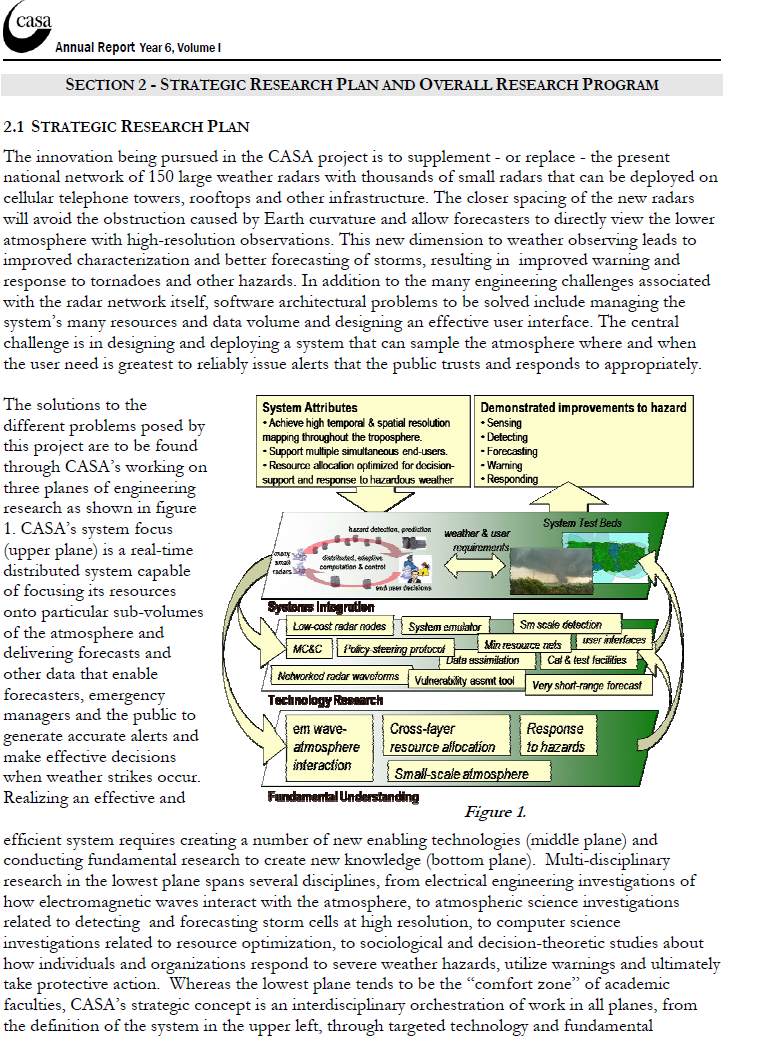
3.2.7.2 Identifying Clear Goals and Milestones
The CASA thrust-level example below (Exhibit 3.2.7.2) amplifies the general guideline of identifying clear goals and milestones by emphasizing the best practice of defining succinct deliverables and outcomes on reasonable timelines. This project-level milestone chart extends the CASA three-plane diagram shown in Exhibit 3.2.7.1 (c) above.
EXHIBIT 3.2.7.2
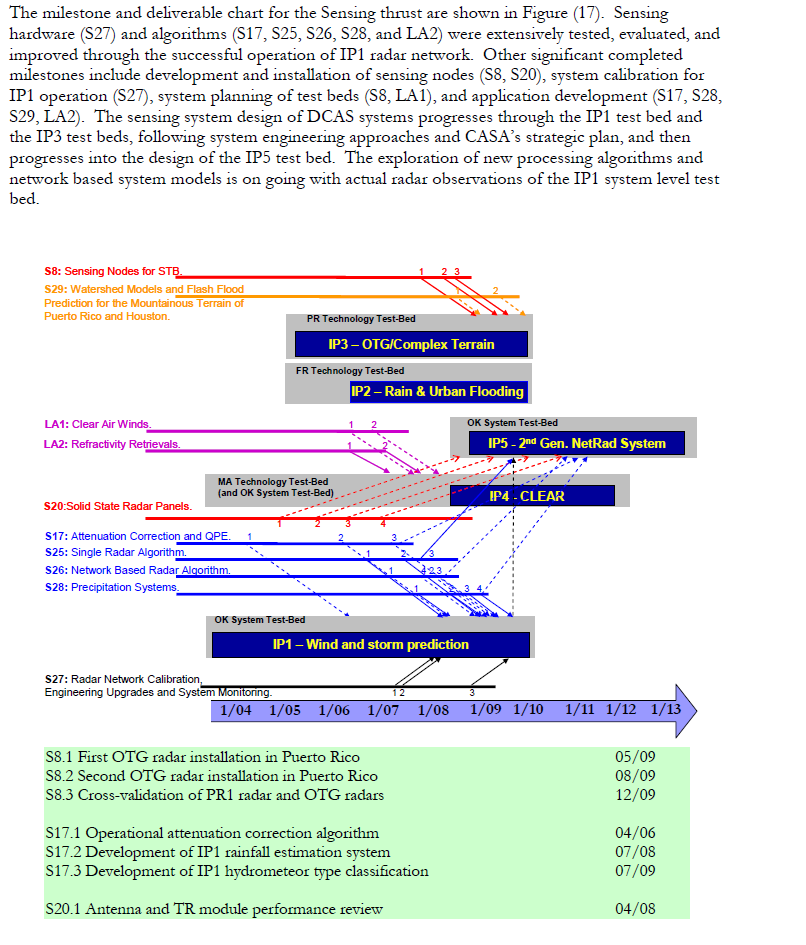
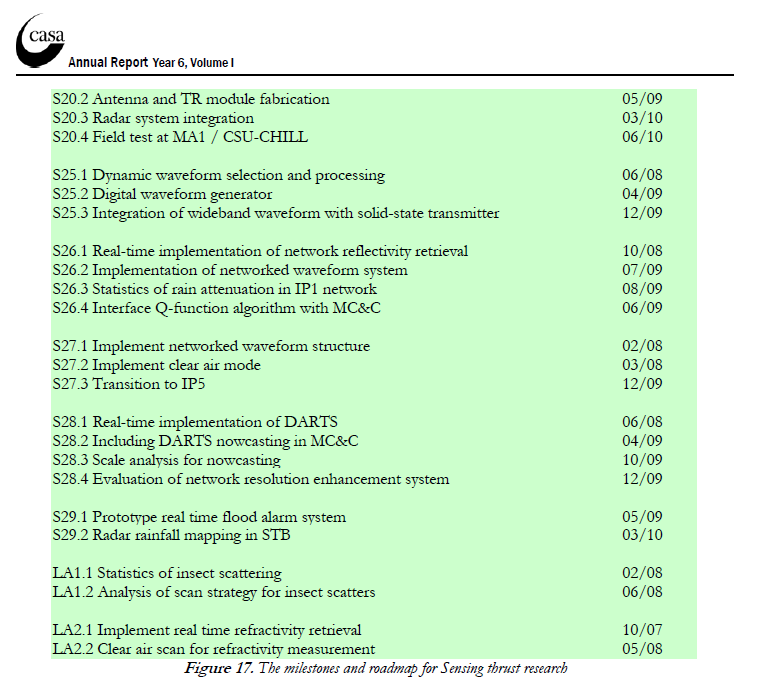
3.2.7.3 Adequate Human and Dollar Resources
Exhibit 3.2.7.3 (a) shows the range of human resources needed by one ERC for its research program. This diversity of participants underlines the importance of best practices that establish a group culture, share the overall ERC vision and mission, and make use of the best communication technologies.
Rather than providing examples showing dollar resources that are merely accumulations of pages of ERC cost estimates by research project, the second exhibit below (3.2.7.3 (b)) amplifies a part of the best practice of defining a structure for plan adjustments, which could include financial adjustments. The example suggests that the original resource estimates may have been a bit short, which highlights that a priority emphasis for strategic planning should be on ensuring that the research tasks can be accomplished within the originally allocated resources—
requests for later “adjustments†in the form of budget increases will not likely be received favorably.
Another example of adjusting the original strategic plan appears in subsection 3.3.8.1.
EXHIBIT 3.2.7.3 (a)
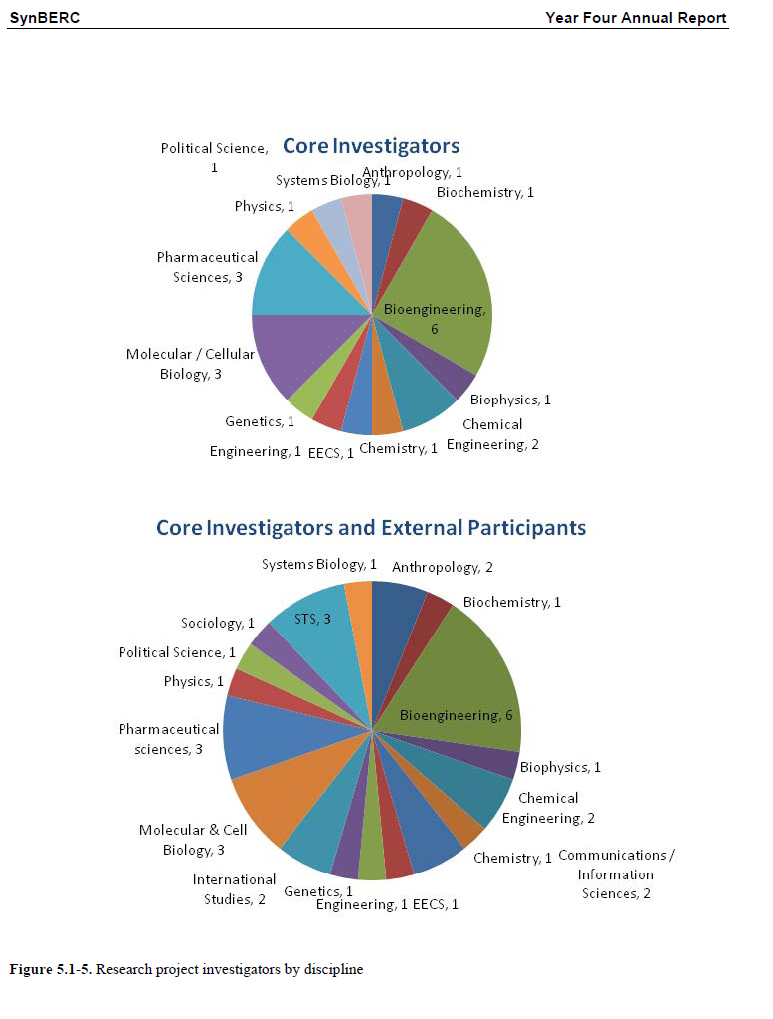
EXHIBIT 3.2.7.3 (b)

3.2.7.4
Articulating Metrics
The importance of good metrics cannot be over-emphasized. Several examples of metrics appear below (note the emphasis on “user-defined“ metrics). See Exhibit 3.2.7.4.
EXHIBIT 3.2.7.4

…

…

…
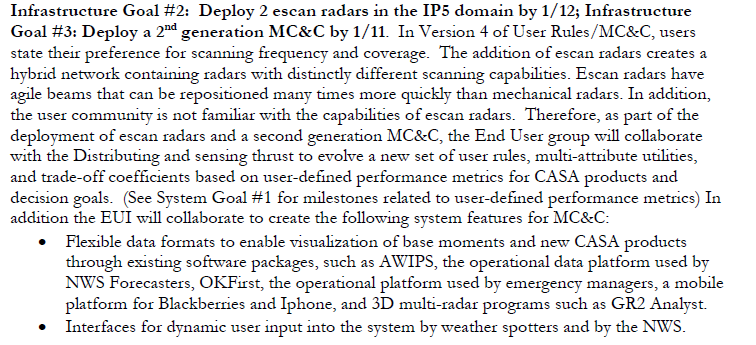
…

…

…
